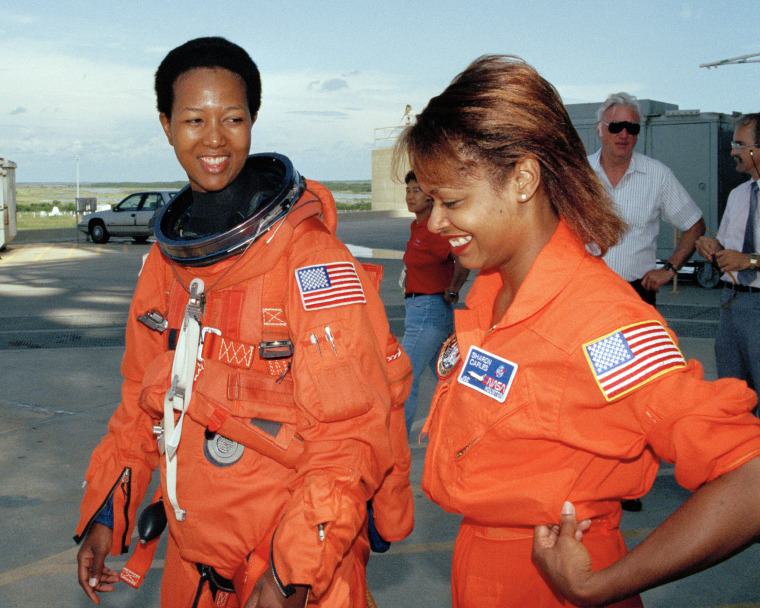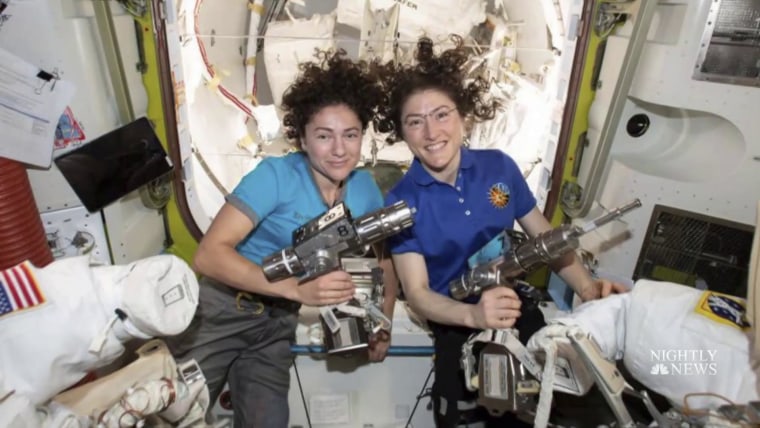NASA astronaut Jessica Watkins celebrates ‘milestone’ for diversity in the space industry
NASA astronaut Jessica Watkins will join a small but groundbreaking list on Saturday when she becomes the fifth Black woman in space and the first Black woman to serve on the International Space Station.
Watkins’ mission has garnered praise from diversity and inclusion experts, but it shows how far Black women still have to go in the white, male-dominated profession.
“You know there aren’t enough of us. Mae Jemison, who made headlines in 1992 when she became the first black woman in space, said:
“There is a lot of guarding behavior, both conscious and unconscious, that keeps people from going out. But once you’re there, it’s ‘where do you fit in?’ People hold you within a stereotype of what they consider a scientist. This constant requirement is that you have to prove that you have the right to be there. Many times I think we achieve in these areas despite, not because. “Watkins will be the fifth Black woman went into space. The others are Jemison; Stephanie Wilson, who, at more than 42 days, has spent more time in space than any other Black woman; Joan Higginbotham; and Sian Proctor, the first Black woman to fly a spaceship.
Watkins joined NASA as an intern and held several positions as a researcher and geologist before she was selected as an astronaut candidate in 2017. Watkins earned a bachelor’s degree in geosciences. and the environment at Stanford University and a PhD in geology from UCLA. Her career with NASA has been long and fulfilling: She has held roles at the agency’s Ames Research Center and studied near-Earth asteroids at the company’s Jet Propulsion Laboratory. NASA, and she is part of the science team of the Mars Science Laboratory rover Curiosity.
She talked about her upcoming trip in a previous interviewagrees that her mission is both a barrier-breaking moment and the natural progression of the field.
“We’ve reached this important milestone, at this point, and the reason we’re able to come at this point is because of the legacy of our forefathers to enable this moment,” Watkins said. “Also, recognizing this is a very exciting future step. So it’s certainly an honor to be a part of that. ”
The crew will blast off from the Kennedy Space Center on Merritt Island, Florida, early Saturday for six months working in the ISS lab, conducting research and maintaining the station, space agency said. Watkins will work alongside three other crew members – NASA astronauts Robert Hines and Kjell Lindgren and European Space Agency’s Samantha Cristoforetti.

While Watkins’ achievement is a huge step forward for the space industry and proof of its strides in diversity, much work remains to be done.
One This year’s report from the Space Frontier Foundation, an organization that advocates for space, found that nearly 90% of those who have been to space are white men. And the entire space industry – from researchers and managers to writers and photographers – is only “slightly better,” the researchers said. The report also found that white people in the space industry are more likely to earn six-figure salaries than black employees.
“The fact that it took so long to get African-Americans on the ISS is disappointing. But it’s nice to see this focus finally happening,” said Kim Macharia, a Black woman who chairs the foundation’s board of directors. She emphasized that even though the teams have started lived on the ISS in 2000it took more than a decade for a Black astronaut, Victor Glover Jr.for long-term service on the station. Bernard Harris Jr. in 1995 became the first black person to walk in space. Just nine years earlier, Ronald McNair became the second Black astronaut in space; He died in the 1986 Challenger space shuttle explosion.
“In particular, less than 12% of all astronauts have been women. And then when you look at the number of people of color, that number is even lower there,” Macharia said. “But in the actual workforce as a whole, about 20% of the industry’s workforce is women. So there’s a lot of work to be done when it comes to addressing these demographic issues.”
Most recently, Jemison has elected as a colleague of the American Association for the Advancement of Science for her widely recognized achievements in this field. Since leaving NASA, she has prioritized diversity in her own efforts. She leads 100 years of Starship, a global initiative to help humans travel to another star within the next 100 years. “I actively attract people who embody the word ‘inclusiveness’ – across ethnicity, gender and geography – as well as across sectors,” she said.
Jemison is not the only former NASA employee to have taken on such a mission. John Hines, a former NASA researcher, founded Hines Family Foundation to provide resources and opportunities for children from disadvantaged communities interested in STEM – science, technology, engineering, and math.
Now, as Watkins continues his career with growing NASA, Jemison is using his recognition to push the industry forward.
“Very often we tend to forget that we have to keep growing. And we don’t hold ourselves to that. I do,” she said. “I always keep myself to keep growing, learning new things and contributing in a different way.”
at Blogtuan.info – Source: nbcnews.com – Read the original article here




